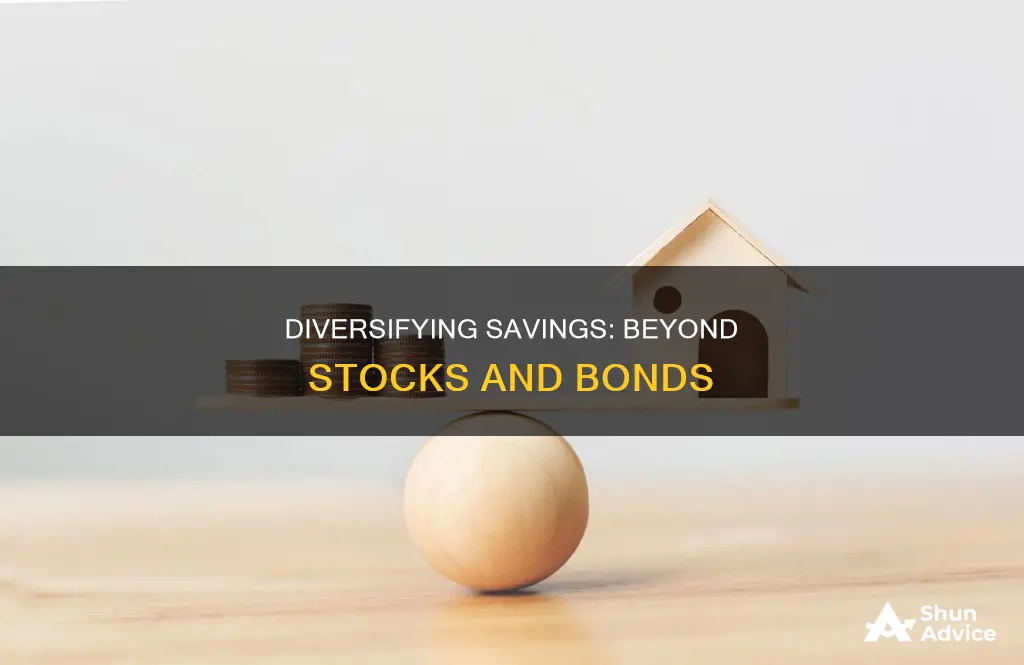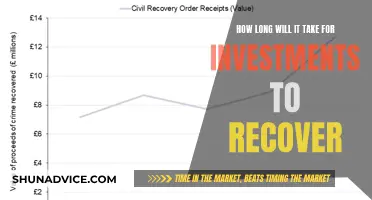
Diversifying your savings and investments is a crucial strategy to reduce risk and protect your finances. The core principle is simple: don't put all your eggs in one basket. In other words, if you diversify your portfolio, a loss in one area is likely to be balanced out by gains in another.
There are several ways to diversify your investments. Firstly, you can invest in a variety of asset classes, such as stocks, bonds, cash, real estate, commodities, and alternative investments. Secondly, you can diversify within each asset class by investing in different industries, sectors, and companies. For example, you could invest in tech stocks, energy stocks, and healthcare stocks. Thirdly, you can consider non-correlated investments, such as bonds, certificates of deposit, gold, cryptocurrencies, and real estate, which are less affected by the daily movements of stock market indexes.
It's important to note that diversification does not guarantee gains or completely eliminate risk. However, it is a powerful tool to manage your investments and protect against significant losses.
| Characteristics | Values |
|---|---|
| Investment types | Stocks, bonds, cash, real estate, commodities, precious metals, private equity, mutual funds, exchange-traded funds (ETFs), index funds, money market funds, U.S. Treasury securities, lifecycle funds, annuities, insurance |
| Investment vehicles | Mutual funds, exchange-traded funds (ETFs), index funds, money market funds, lifecycle funds |
| Investment risk | Systematic risk, asset-specific risk, market risk, volatility, asset-specific risks, company-specific risk |
| Investor profile | Age, risk tolerance, financial situation, financial goals, family finances, investment horizon, cultural background |
| Investment strategy | Dollar-cost averaging, buy-and-hold, buy-low-sell-high, active/passive management, asset allocation, diversification, rebalancing |
What You'll Learn
- Diversify your portfolio by investing in different industries, interest plans, and tenures
- Spread your investments across different asset classes
- Understand the risks and returns of stocks and bonds
- Consider investing in money market securities for cash
- Diversify within asset classes by industry, company size, and geography

Diversify your portfolio by investing in different industries, interest plans, and tenures
Diversifying your portfolio by investing in different industries, interest plans, and tenures is a crucial step in minimising risk and maximising returns. Here are some strategies to achieve this:
Spread Your Investments Across Industries
Avoid putting all your investments into a single industry, even if it is performing well. For example, during the Covid-19 pandemic, the pharmaceuticals sector was one of the best-performing industries. However, a wise investor would also diversify into other sectors with high potential, such as education technology and information technology.
A well-diversified portfolio should include a variety of industries such as tech, energy, healthcare, and more. This ensures that your investments are not all affected by the same industry-specific risks and economic cycles.
Diversify Your Interest Plans
There are two basic types of investments: stocks and bonds. Stocks are typically high-risk, high-return investments, while bonds are more stable with lower returns. To minimise risk, allocate your investments between these two options.
A common rule of thumb for allocating your investments is to subtract your age from 100 – the resulting percentage should be the allocation to stocks, with the remainder in bonds. For example, a 30-year-old may opt for a portfolio of 70% stocks and 30% bonds. As you get older, gradually shift the balance towards bonds to reduce risk exposure.
Consider Different Tenure Options
When investing, you can choose from various tenure options, such as short-term, medium-term, or long-term investments. Each option has its own advantages and should be considered as part of your overall investment strategy.
Short-term investments typically mature within one year and are ideal for those who want quick returns or need access to their capital within a short timeframe. Examples include money market instruments like treasury bills (T-bills) and certificates of deposit (CDs).
On the other hand, long-term investments mature over several years and are suitable for those investing for future goals such as retirement. Examples include stocks, bonds, and real estate.
By diversifying your portfolio across different industries, interest plans, and tenures, you can reduce risk, maximise returns, and tailor your investments to your specific goals and risk tolerance.
Theft of Investments: A Growing Concern
You may want to see also

Spread your investments across different asset classes
Spreading your investments across different asset classes is a fundamental principle of investing. This strategy, known as diversification, is often summed up as "don't put all your eggs in one basket". The basic idea is that if one of your investments loses money, your other investments will balance out those losses.
There are three main asset classes: stocks, bonds, and cash or cash equivalents. Stocks are considered high-risk, high-return investments, while bonds are usually more stable with lower returns. Cash or cash equivalents, such as savings accounts or certificates of deposit, are low on both risk and return.
When diversifying your portfolio, you should aim to blend these different asset classes together. For example, you could invest in a mix of stocks and bonds, so that your portfolio is not overly exposed to the volatility of the stock market.
Within each asset class, there are also opportunities for diversification. For instance, when investing in stocks, you can diversify by industry, company size, and geography. You can invest in a range of sectors, such as tech, energy, healthcare, and consumer staples. You can also consider large-cap and small-cap stocks, growth stocks, and value stocks.
Similarly, with bonds, you can diversify by investing in bonds from different issuers, such as the government, municipalities, or corporations. Bonds also offer different levels of creditworthiness and return, so you can further diversify by choosing a mix of safe, low-return bonds and riskier, higher-return bonds.
It's important to note that diversification does not guarantee that your investments will never lose money. Market risk, or systematic risk, affects all assets. However, diversification can help to reduce overall risk and increase the potential for overall returns. By spreading your investments across different asset classes and within each class, you can lower the chances of any one investment severely impacting your portfolio.
Mortgage Applicants: Lying About Investment Properties
You may want to see also

Understand the risks and returns of stocks and bonds
Stocks and bonds are two of the most common investment products, with stocks offering higher returns but carrying more risk, and bonds generally providing lower returns but being less risky.
Stocks
Stocks are considered a high-risk, high-return investment option. When you buy stock, you are essentially buying a share of ownership in a company, and your return depends on how well the company does. If the company performs well, the stock price rises, and you can sell your stock for a profit. However, if the company does poorly or falls out of favour with investors, the stock price can fall, and you may lose money.
The return on stocks can come in two ways. Firstly, through capital gains or appreciation, which is when the stock price rises due to the company's performance. Secondly, through dividends, which are payouts of a portion of the company's profits to stockholders.
While stocks have provided the highest average rate of return over many decades, there are no guarantees of profits. The performance of a stock depends on various factors, including the company's business model, management, corporate governance, brand value, compliance with regulations, risk management practices, and competitive advantage.
Bonds
Bonds are generally considered a more stable and less risky investment option compared to stocks. When you buy a bond, you are essentially lending money to a company or government, and in return, they promise to repay the principal amount (the amount borrowed) along with interest.
Bonds have a maturity date, which is when the principal amount is repaid to the investor. Bonds can be short-term (maturing in 1-3 years), medium-term (maturing in 4-10 years), or long-term (maturing in more than 10 years). The interest rate, or coupon rate, is paid at predetermined intervals, usually annually or semi-annually.
The risk and return of bonds depend on the creditworthiness of the issuer. Bonds issued by governments, known as sovereign bonds or Treasuries, are considered very safe because the risk of a government defaulting on its debt is low. These bonds have a high credit rating but offer lower yields compared to corporate bonds.
Corporate bonds, on the other hand, depend on the financial health of the company issuing them. The riskiest corporate bonds are known as "junk bonds", which offer high returns but carry a high risk of default.
It's important to note that while bonds are generally less risky than stocks, they are not completely risk-free. Some of the risks associated with bonds include interest rate risk, credit/default risk, and prepayment risk.
Balancing Stocks and Bonds
When diversifying your investments, it's essential to balance stocks and bonds based on your age, risk tolerance, and financial goals. As a general rule, younger investors can allocate more of their portfolio to stocks, as they can afford to take on more risk and have a longer time horizon. As you get older, it's advisable to increase the proportion of bonds in your portfolio to reduce risk.
For example, a 30-year-old might have 70% of their portfolio in stocks and 30% in bonds, while a 60-year-old might adjust their allocation to 40% stocks and 60% bonds.
By combining stocks and bonds in your portfolio, you can benefit from the higher returns of stocks while mitigating some of the risks by including the more stable bonds. This balance between risk and return is a key aspect of successful investing.
Stable Interest Rates: Investors' Confidence Boost?
You may want to see also

Consider investing in money market securities for cash
Money market instruments include certificates of deposit (CDs), commercial papers (CPs), and treasury bills (T-bills). They are a great way to diversify your savings and investments. Here are four to six paragraphs explaining why you should consider investing in money market securities for cash:
Money market funds are a type of mutual fund that deals in highly liquid, short-term debt instruments and cash equivalents. They are considered extremely low-risk investments. While not as safe as cash, money market funds are a good option for those seeking a safe and stable investment with modest returns. Money market funds are ideal for those saving for short-term goals or building an emergency fund.
Money market funds invest in high-quality, short-term debt instruments from a range of issuers, including governments, corporations, and banks. These instruments have a maturity period of less than 13 months, with the average maturity being no more than 60 days. This ensures that investors' money is not locked into long-term instruments, providing high liquidity. Money market funds also have the advantage of being very accessible, with small minimum investment amounts, making them suitable for individual investors.
One of the key benefits of money market funds is their ease of liquidation. They are designed to offer investors a safe and liquid option for investing in secure, cash-equivalent assets. Money market funds are also regulated by financial authorities, such as the U.S. Securities and Exchange Commission, to ensure stability and protect investors. These regulations include guidelines on the characteristics, maturity, and variety of allowable investments.
Treasury bills, in particular, are considered very safe investments, often backed by central governments. They are ideal for short-term investments and can be used to offset riskier investments. While they may not offer high returns, they provide stable and secure options for those seeking to preserve their capital. Money market funds, in general, are a good way to generate modest income through interest while minimising risk.
Overall, money market securities offer a great opportunity for those looking to diversify their savings and investments. They provide a stable, liquid, and low-risk option for investors, particularly those seeking short-term investment goals or wanting to build an emergency fund. Money market funds allow investors to access their money at any time, making them a flexible and attractive investment choice.
Investments: Where People Put Their Money
You may want to see also

Diversify within asset classes by industry, company size, and geography
Diversification is a common investment strategy that involves spreading your investments across different asset classes to reduce the risk of market volatility. Diversification within asset classes can be achieved by considering industry, company size, and geography.
Industry
Investing in different industries is a crucial aspect of diversification. It is important not to put all your investments into a single sector, even if it is among the best-performing sectors. For example, instead of solely investing in the pharmaceuticals sector, you can diversify into other sectors like education technology or information technology. The economic cycle affects each industry differently, so by investing in multiple industries, you reduce the risk of market volatility.
Company Size
Company size, or market capitalization, refers to the total value of a company's tradable stock. Larger companies tend to be more stable and better able to weather economic downturns, but they may have less growth potential compared to smaller companies. Therefore, investing in a mix of large, medium, and small companies can provide a balance between stability and growth potential.
Geography
Including a mix of domestic and international markets in your portfolio is another way to diversify. Different countries have varied economic cycles, so investing in both local and foreign markets can help reduce risk. Foreign markets can be further classified as developed and emerging markets. Developed markets, such as European nations, Australia, and Japan, tend to have more stability, while emerging markets, such as Brazil, Russia, India, and China, offer higher growth potential but with increased volatility.
By diversifying within asset classes by industry, company size, and geography, you can further reduce the risk of market volatility and improve the overall performance of your investment portfolio.
Wealthy Secrets: Where the Rich Invest
You may want to see also
Frequently asked questions
Diversification is a risk-reduction strategy that involves spreading investments across a range of assets. The idea is that if one investment loses money, the other investments will make up for those losses.
Diversification reduces overall risk while increasing the potential for overall return. It also helps to protect your portfolio from market volatility.
There are several ways to diversify a portfolio, including by asset class, within asset classes, and beyond asset classes. Some common asset classes include stocks, bonds, cash, real estate, commodities, and alternative investments.







